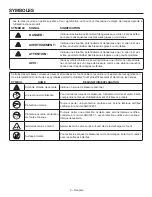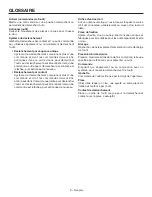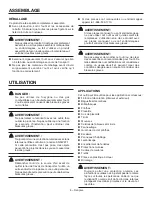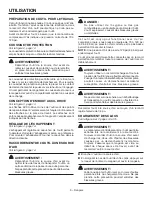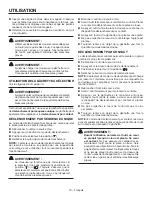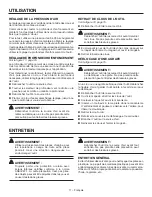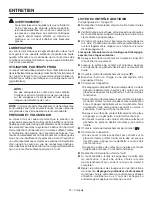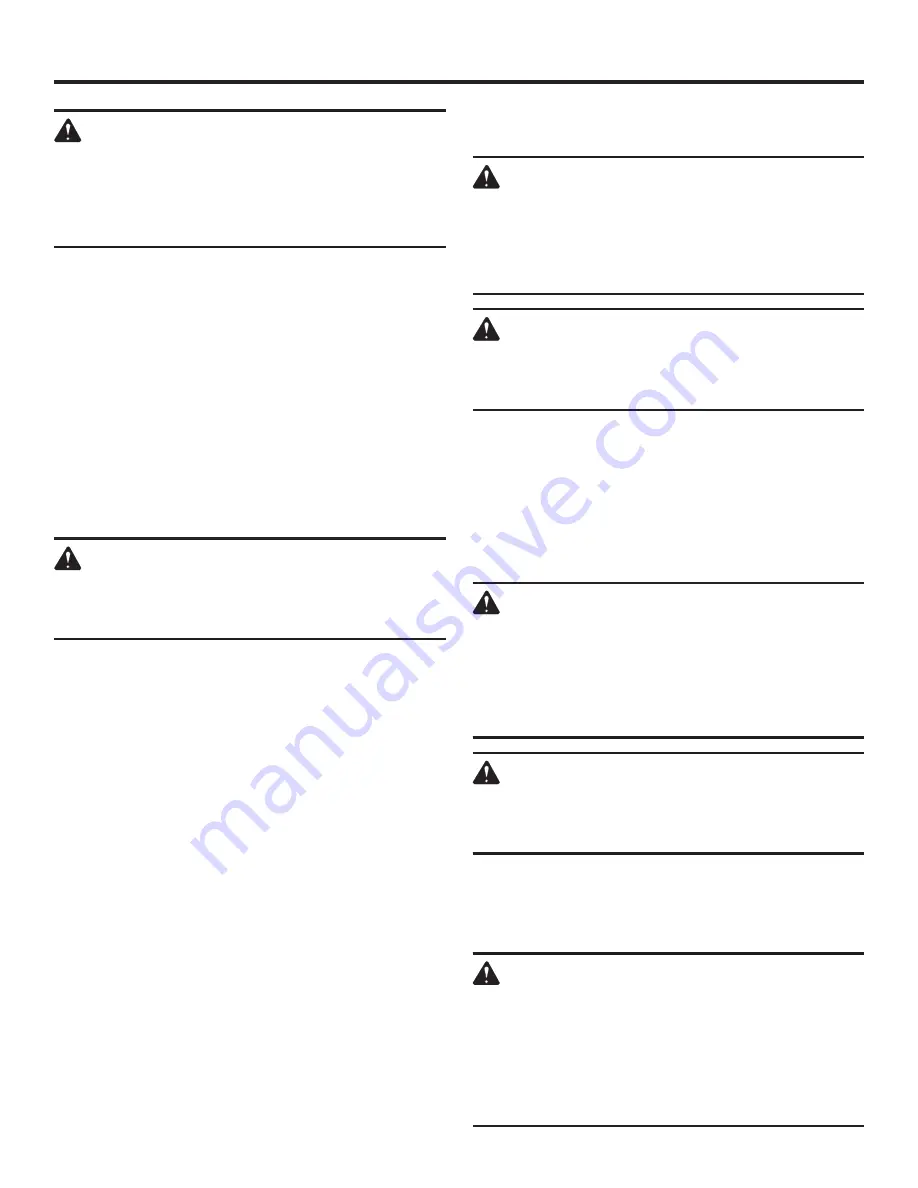
9 – English
OPERATION
WARNING:
Always wear eye protection. Eye protection does
not fit all operators in the same way. Make sure the
eye protection chosen has side shields or provides
protection from flying debris both from the front
and sides.
PREPARING THE TOOL FOR USE
This is an oil-free tool, therefore lubrication is not required.
However, the occasional addition of air tool lubrication into
the air fitting on the tool will not adversely affect performance
or harm the tool.
Before connecting the tool, check the air compressor gauge
to be sure it is functioning within the proper range of 70-
120 psi.
NO-MAR PAD
See Figure 2, page 14.
The no-mar pad attached to the workpiece contact helps
prevent marring and denting when working with softer
woods.
WARNING:
Disconnect the tool from the air supply before
removing or replacing the no-mar pad. Failure to
do so could result in serious personal injury.
The no-mar pad can be removed by pulling it down and
away from the workpiece contact. To replace the no-mar
pad, fit it into place over the workpiece contact and push
up at the back to reseat.
On-board storage for the no-mar pad is located on the
magazine of the tool. An extra no-mar pad is provided in
the on-board storage area.
ACCU-DRIVE TIP DESIGN
See Figure 3, page 14.
The ACCU-Drive arrows on the nose of the tool are reference
points that indicate the location and angle that fasteners will
enter the workpiece. Fasteners are driven at approximately
the same angle and location as the arrows.
ADJUSTING THE EXHAUST
See Figure 4, page 14.
The adjustable exhaust on the end cap of the tool allows
the operator to direct the exhaust according to operator
preference. To adjust, turn the exhaust cap in the desired
direction.
CONNECTING THE TOOL TO AN AIR SUPPLY
See Figure 5, page 14.
WARNING:
Disconnect the tool from the air supply before
leaving the work area, moving the tool to another
location, or handing the tool to another person.
Failure to do so could result in serious personal
injury.
DANGER:
Do not use oxygen, combustible gases or bottled
gases as a power source for this tool. The tool will
explode and cause death or serious injury.
This tool is designed to operate on clean, dry compressed air
at regulated pressures between 70 and 120 psi . The correct
air pressure is the lowest pressure that will do the job.
NOTE:
Air pressure that is higher than 120 psi may damage
the tool.
The tool and air hose must have a hose coupling that allows
all pressure to be released from the tool when the coupling
is disconnected.
WARNING:
Always use a coupling that discharges all the
compressed air in the tool at the time the fitting or
hose coupling is disconnected. Using a coupling
that does not discharge the compressed air could
cause unintended operation and serious personal
injury.
WARNING:
Do not climb rigging or scaffolding while carrying
a tool that is connected to an air hose. Doing so
could result in serious personal injury.
Connect the tool to the air supply with a 1/4 in. female quick
connector.
LOADING THE TOOL WITH NAILS
See Figures 6 - 7, pages 14 and 15.
WARNING:
The tool’s driving mechanism may cycle when the
tool is first connected to the air supply. Always
connect the tool to a pressurized air supply before
loading nails to prevent injury from unintended
cycling. Always make sure the tool’s magazine
is empty at the beginning of each work session,
before connecting to an air supply.

















